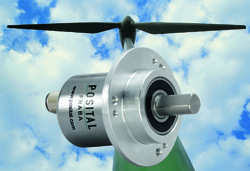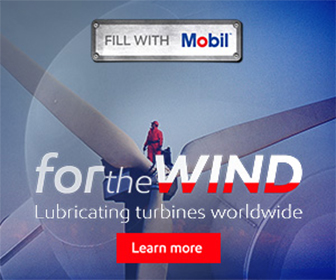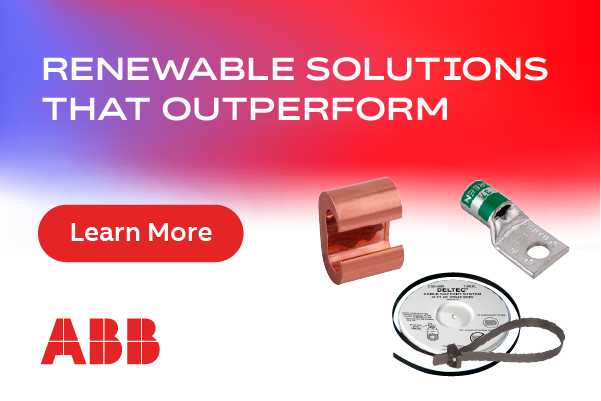Understanding Encoders: Small devices that play a large role in wind turbine efficiency
 There’s more to a wind turbine than meets the eye. From afar, if you didn’t know better, it’s nothing but a tower and rotor. Up close, a cross-sectional view reveals it to be so much more: a mass of technologies—large and small—some uniquely adapted for wind energy production. There’s a generator, of course, but also sensors, connectors, control cabinets, motors, cables and couplers, many of which are likely to be improved upon as the expansion of wind power globally spurs innovation throughout the supplier base. Over time, an operator should expect to realize incremental efficiencies and cost savings by incorporating some of these enhancements.
There’s more to a wind turbine than meets the eye. From afar, if you didn’t know better, it’s nothing but a tower and rotor. Up close, a cross-sectional view reveals it to be so much more: a mass of technologies—large and small—some uniquely adapted for wind energy production. There’s a generator, of course, but also sensors, connectors, control cabinets, motors, cables and couplers, many of which are likely to be improved upon as the expansion of wind power globally spurs innovation throughout the supplier base. Over time, an operator should expect to realize incremental efficiencies and cost savings by incorporating some of these enhancements.
That’s certainly true of encoders. Though they can be smaller than a fist, these industrial measuring devices play an outsized role in turbine performance and safety. Encoders are an integral part of the control system that maximizes the generation of electricity by optimizing the aerodynamics of the turbine in response to fluctuating wind conditions. The latest non-contact optical and magnetic encoders offer cost and efficiency gains over older types of motion sensors, and open the door to improvements in the capabilities of turbine control systems.
A turbine control system has two main functions: yaw and pitch. Yaw control keeps the turbine pointed directly into the wind, based on feedback to one or more motors from an anemometer or wind sensor mounted on the turbine body. Typically, these motors that change the orientation of the turbine are equipped with a rotary encoder to register rotations of the drive motor shaft and, hence, the turbine nacelle points. Pitch control involves using other small motors to align the turbine blades in response to changes in wind speed. Motion sensors play an essential role here, feeding back data on the pitch angle of each blade. They also have an important secondary role in helping the control system slow or stop rotation in unsafe wind conditions by adjusting the angle of the blades to a neutral position.
Non-contact encoders outperform
This measurement data must be extremely accurate, and consistently so. In fact, this is so critical that turbine manufacturers usually incorporate multiple speed monitoring sensors on their rotating components as a failsafe strategy. One such conventional approach is a rotary encoder connected directly to the rotor shaft, and a proximity sensor that fixes on the passage of specially machined features on rotating components. However, these technologies have proven susceptible to errors, and they are costly to install and maintain.
Recently, a European wind turbine maker tried a new approach. It field-tested the latest generation of non-contact optical encoders to measure the rotational speed of the rotor. If they performed well, they were to be deployed as backup to shaft-mounted proximity sensors. These non-contact encoders thoroughly outperformed the proximity sensors, prompting this manufacturer to deploy them as its primary speed monitoring technology, with proximity sensors as the backup.
Non-contact optical encoders require little or no surface preparation in the area where velocity is measured; whereas, proximity sensors require the incorporation of specially machined features around the circumference of the rotor shaft to trigger the sensor. The encoder, with its 2D camera focusing on the revolving hub, delivers excellent accuracy and dynamic responsiveness to changing rotor speeds. Since there’s no physical contact between the sensor and moving object, dirt or other surface contaminants won’t degrade measurement accuracy. Non-contact encoders are easy to install and maintain, are extremely durable, and will perform reliably for many years (which also makes them ideal for a retrofit when it comes time to renew the control systems in older machines).
Technology to boost performance
Given their exceptional accuracy and dynamic response, this new generation of non-contact optical encoders could allow turbine manufacturers to introduce enhancements like individual pitch control for each blade, so as to make continual adjustments to compensate for variations in wind speed. Such subtle changes in blade alignment would provide a worthwhile, incremental improvement in turbine performance.
With their lack of moving parts and well-sealed packaging, non-contact optical and magnetic encoders are proving to be highly reliable motion sensors in harsh operating environments. The newest magnetic encoders are especially well suited for offshore wind farms, manufactured with heavy-duty stainless steel enclosures that protect the measurement components from great temperature fluctuations (-40Ëš F to +185Ëš F | -40Ëš C to +85Ëš C), high humidity, salty liquids, and high-pressure water spray (up to IP 69K ratings). They can be self-powering, using Wiegand effect technology to keep Hamilton, NJ track of the number of rotations, and are available with popular analog or digital electrical interfaces like SSI, CANopen, RS232, and more. Analog versions make excellent replacements for traditional potentiometers, offering superior accuracy, reliability, and longevity.
Christian Fell is VP, Position and Motion Sensors of Fraba Inc., Hamilton, New Jersey.
FRABA
www.fraba.com
Author: Christian Fell
Volume: January/February 2012









